Endless industrial belts are a vital component in many sectors, playing a crucial role in various production and transportation processes. Unlike traditional belts that require a splice or joint, endless belts are made in a continuous loop, which enhances their strength and reliability. They are widely used in industries such as manufacturing, packaging, food processing, and material handling.
Key Applications of Endless Industrial Belts
- Conveyor Systems: Endless belts are a preferred choice in conveyor systems where consistent and smooth motion is required. Their seamless design reduces the risk of breakdowns caused by joint failure, making them highly reliable in continuous operations like assembly lines and packaging units.
- Power Transmission: These belts are also used for transmitting mechanical power between two or more rotating shafts. The endless design ensures uniform tension across the belt, preventing slippage and improving the efficiency of power transmission systems in machinery and equipment.
- Food Processing: In industries like food processing, hygiene and smooth transport are key. Endless belts, often made from materials such as polyurethane or silicone, ensure seamless movement without contamination risks at the joints, meeting strict hygiene standards.
- Textile Industry: Endless belts are extensively used in textile machinery, where precision and continuous operation are essential. The smooth surface of these belts prevents fabric damage and ensures flawless performance over time.
- Packaging Industry: Endless belts enable the smooth transfer of goods and packaging materials without interruptions, which is critical for maintaining high-speed production lines. Their durability allows them to handle repetitive processes while minimizing wear and tear.
Benefits of Endless Industrial Belts
- Seamless Design for Maximum Durability: The absence of splices or joints in endless belts eliminates weak points that can lead to belt failure. This feature increases the belt’s durability, allowing it to withstand heavy loads, high speeds, and extreme conditions for prolonged periods.
- Reduced Maintenance: Endless belts require less maintenance compared to their jointed counterparts, as there are no seams that can wear out or break. This reduces downtime and maintenance costs, leading to increased efficiency and productivity.
- Improved Precision and Performance: The continuous, even tension distribution of endless belts ensures stable and precise performance. This is especially important in industries like textiles and electronics, where high accuracy is required in the movement of delicate materials.
- Enhanced Efficiency: Endless belts have lower chances of slippage due to their consistent tension and smooth surface. This translates to improved energy efficiency, reduced operational costs, and higher productivity in power transmission and material handling applications.
- Versatility: These belts can be customized in terms of material, thickness, and surface texture to suit specific industrial applications. Whether you need high-temperature resistance, anti-static properties, or food-grade materials, endless belts can be tailored to meet your exact needs.
- Hygiene and Safety: In industries such as food processing and pharmaceuticals, endless belts contribute to higher hygiene standards. Without seams, there’s less chance for bacteria or contaminants to accumulate, making them a safer option for handling sensitive products.
Endless industrial belts are an essential component in various applications where durability, reliability, and performance are key. Their seamless design eliminates common issues found in traditional jointed belts, making them a go-to choice for industries aiming to optimize their processes and reduce operational disruptions. Whether in conveyor systems, power transmission, or specialized sectors like food processing, endless belts provide unparalleled benefits in ensuring smooth and efficient operations.
